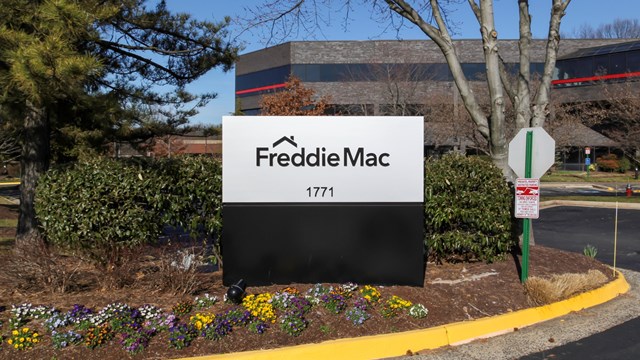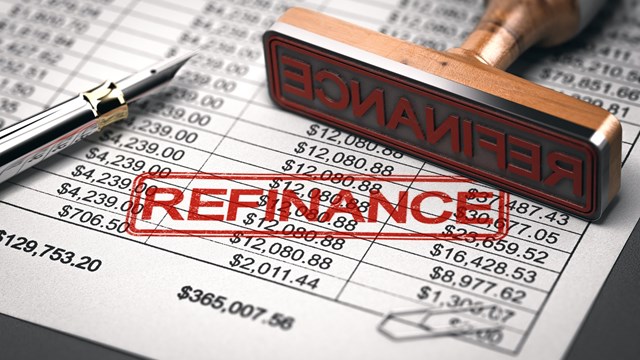Money. We all need it and want more of it. And just like any business your building needs to cover
its expenses with its income. There are ways your building can make money without having to raise maintenance fees. Installing basement storage lockers, leasing out existing parking garage space and even leasing roof space to cellular phone companies are all ways to generate that extra cash flow that every building needs.
Storage Lockers:
Safe and Profitable
One tried and true method to raise revenue for the building is the installation of storage lockers. These lockers, usually placed in the building's basement, can be rented out to residents of the building. This also helps to keep the basement area clutter free and is an added amenity to the building.
If I know the building is looking for ways to increase their revenue, I always work with them to make sure that we can find the best way to do it, explains Irwin Cohen, president of A. Michael Tyler Realty, a management firm in Manhattan. Most buildings in the City don't have garage space, so I usually recommend laundry rooms or storage units in the basement. You can get a good contract and a nice basement along with extra money coming in to the building.
Three companies that specialize in storage lockers are A&D Steel, Bargold and Wirecrafters. All will provide design, installation and manufacturing of specially designed storage systems. Bargold, located in midtown Manhattan, can build and install a sample storage unit in the basement for a free trial period. This will allow everyone in the building the opportunity to see how the unit works. They will also provide a customized survey for your building that can be distributed to everyone in the building to assess the residents' interest in the lockers. If the building decides to go ahead with the storage units, Bargold will send a design team to complete a thorough evaluation of the basement. When the order is placed, Bargold will custom build each storage unit to fit the basement. This is an added benefit for basements that may have columns or pipes.
In addition to purchasing the storage units outright, Bargold offers a lease-to-purchase plan. For as little as $13 per storage unit, the building can sign a 24 to 48 month lease with a purchase option at the end of the lease, explains Josh Goldman, executive vice president at Bargold. During the period of the lease, the monthly income generated by the units will offset the monthly lease payments, resulting in a constant positive cash flow for the building.
If your building does not want to buy the storage units, Bargold also has a rental plan. A month-to-month rental agreement is drawn up and signed by Bargold and individuals who want to rent storage units. Bargold will then remit 25 percent of the gross rental income to the building. This plan allows the building to provide the storage amenity without the administrative work of record keeping, billing or rent collection, Goldman adds.
We had been discussing the idea of storage lockers on and off for about five years, explains Guy Bergeron, board president of his co-op in Forest chose Bargold. They were quickly installed and within one week they were all rented. In addition, because we had Bargold design the storage area, we decreased the number of rooms needed for storage from five to two. So we built an ffb exercise room in one of them. Everything was working out so well and the demand for the lockers was so high that we ordered more and again all of them were quickly rented. We now receive $12,424 per year in storage revenue. We wonder why we waited so long, Bergeron exclaims with a laugh.
Parking Garages
If the building already has a parking garage you may want to make sure that it is being utilized properly so that a profit can be generated. There are two approaches to operating the garage: hire an in-house manager or lease the facility to a professional garage operator. There are pluses and minuses to each type of management that the board needs to look into very carefully before deciding which approach to take.
The immediate advantage to in-house management is that it allows the board to keep all of the revenues as well as maintain complete control over the operation of the garage. The disadvantage is that the building is responsible for everything involved in its operation. The board is responsible for the installation of safety equipment and security devices as well as the maintenance of this equipment and the entire garage.
The best type of building for in-house management would be one like Schwab House on Riverside Drive where there is not a lot of transient parking and where board members are willing to get involved with all aspects of running the garage. Our revenue increased by controlling it ourselves, says Darleen Linch-Hager, executive manager and garage manager for Schwab House. We met with other garage operators to get ideas and suggestions on running a garage. It has been very profitable for us and we don't regret it.
If the building is in a prime location where non-resident parking is heavy it might be a better idea to lease the garage space to an outside company. An agreement can be set up with a garage management company that will pay a monthly fee to the building to operate the garage and collect the profits. In such situations, advises Kevin Wolf, president of Rapid Park Industries, a garage operator in the Tri-State region,It's a good idea to tie in profit-sharing. For example, you could set a gross goal of $1 million dollars per year and anything over that could be split evenly between the building and the garage operator. The building may not have total control of the day-to-day operations, but the worry over maintaining and running the garage belongs to the outside company.
Board members are volunteers who shouldn't have to concern themselves with garage management, states Martin Cohen, board president of a 180-unit co-op on East End Avenue. Managing a co-op and running a garage are two different businesses which should be kept separate. Leasing the garage makes sense because we can earn income without dealing with the day-to-day operations of the garage.
According to Cohen, it is a good idea to set up a committee to monitor the garage operation. Looking over the garage expenses and payroll reports is important. You want to make sure that everything looks right, he advises. Both Cohen and Wolf suggest that the committee should look at the insurance claims processing, maintenance costs and the scheduling of extra employees because these can all pose a potential loss if not monitored. For those that have management agreements, be careful that the company doesn't mark up costs, warns Wolf. By monitoring the books the potential for wrongdoing is decreased.
As with any type of decision involving the building, it is important to ask the potential vendor for references and to check those references thoroughly. If you do your researchincluding going to look at sites where prospective companies are operatingand set up a competitive bidding situation, you're sure to find a company that you feel comfortable with, explains Elliot Brownstein, president of Mutual Parking, which manages six co-op and condo garages in Manhattan.
Sidney Offit, a board member of a 130-unit co-op on West 65th Street, agrees. It is important to do your research and find a company that is willing ffb to work with you and that you are comfortable with, he says. Offit's building has a 50-year lease agreement with Mutual Parking. The key is to have people with agreeable dispositions and sensitivity toward the tenants, Offit says.
Your Roof Can Make
Money for You
Sensitivity towards the tenants is important, especially when considering the newest form of revenue buildingleasing roof space to cellular phone companies. The number of people with cellular phones is increasing on a daily basis and it is growing more difficult to serve all of these people in large cities where signals can be lost just by crossing the street. Because of the demand, New York City roof space is a hot commodity to telecommunications companies that provide cellular service. But what are the health concerns involving these antennas?
It's really too early to tell. When cell phones started becoming popular there was a lot of talk about the antennas on the phone causing brain tumors, says Andy Patterson, regional project manager at Nextwave Communications. Now that cell phones have been in use for a while studies show that the potential damage is very minimal and we feel the same about antennas on rooftops.
If a building decides that it wants to go ahead and lease roof space, there are a few steps that need to be taken first. The building should contact its attorney before undertaking any contract. Next, the board or manager can contact communication companies directly or go through a company like Clydesdale Communications, which acts as a liaison between the building and the telecommunications companies.
Many people are new to the whole idea of wireless communications, says Kevin Ryan, principal of Clydesdale, which is located in downtown Manhattan. What we do is make sure the building wants to go ahead and lease a part of its roof and then we find a company that wants that roof space. We help negotiate a contract between the building and the telecommunications company.
According to Ryan, the basic contract can be as short as five years or as long as 20 years. Premium sites can have a contract with a minimum of 12 months and then the building can proceed on a month by month basis. It is important to make sure that the building's attorney and managing agent are involved in all aspects of the negotiations to make sure that the building gets the type of contract that it wants.
There are some important points to remember and you needto make sure that these are clearly stated in the contract, explains Ryan. Usually these sites must be available to the company 24 hours a day, seven days a week. They usually provide their own power, wiring, equipment and shelter. It is also a good idea to have the contract state who has access to the site and whom to notify when the site needs to be accessed. Currently, premium sites in New York City can command between $500 and $1,000 dollars per month. With the popularity of roof space increasing, the prices will most likely go up.
When choosing a method to increase revenue in your building, first make sure that this is the method your building wants to pursue. If no one is going to rent storage space or few people will be using the parking garage it might not produce the kind of profits you are looking for. But once the building is sure of the plan to follow, do your research, work with your building's experts and watch the dough roll in.
Ms. Cooper is editorial/internet coordinator of The Cooperator.







Leave a Comment